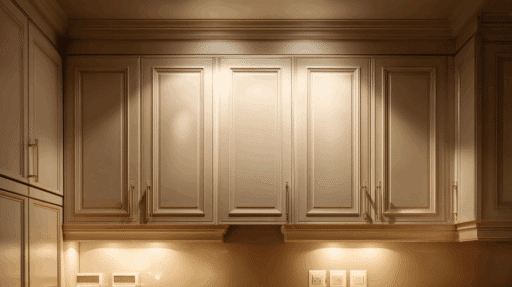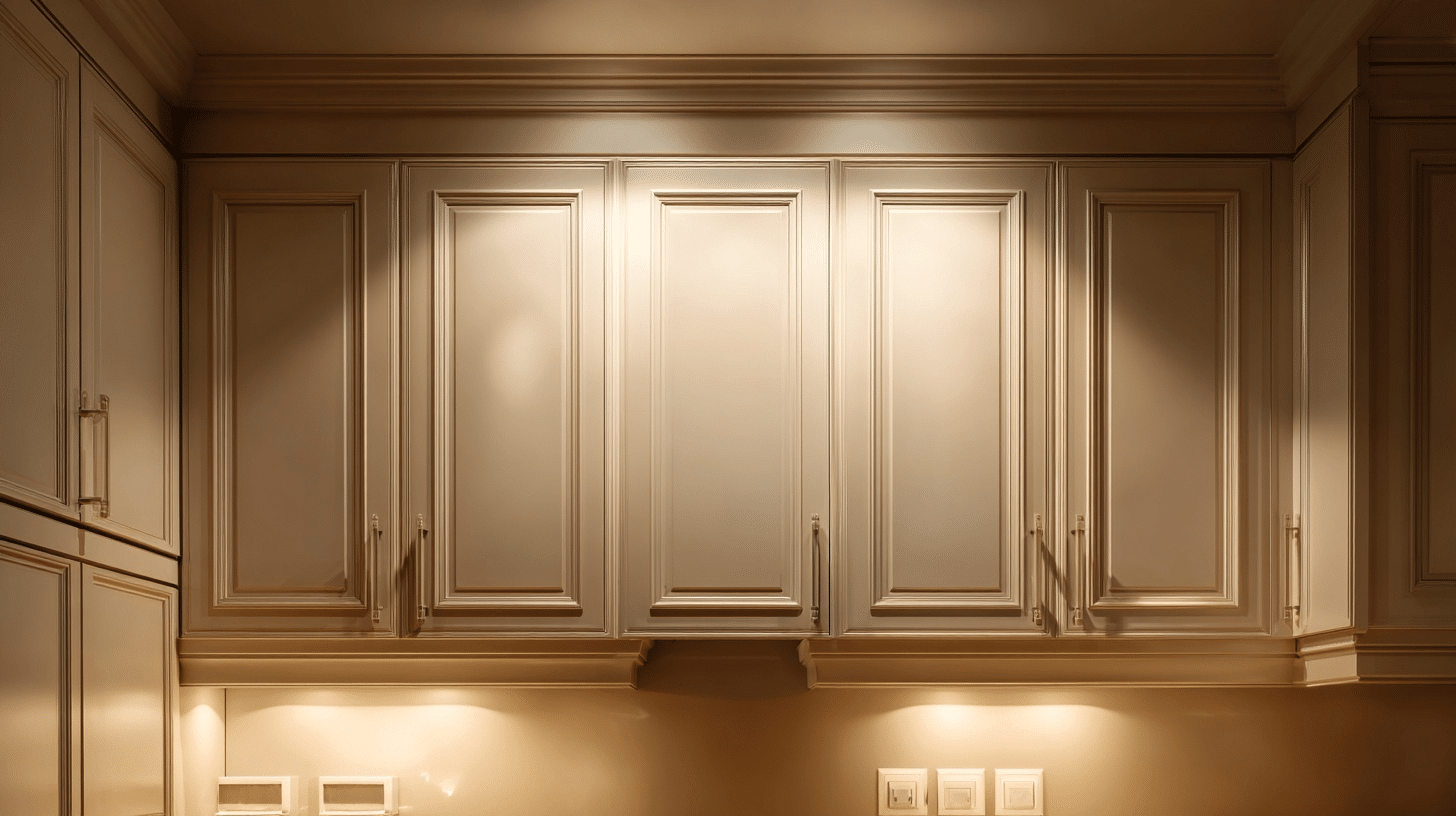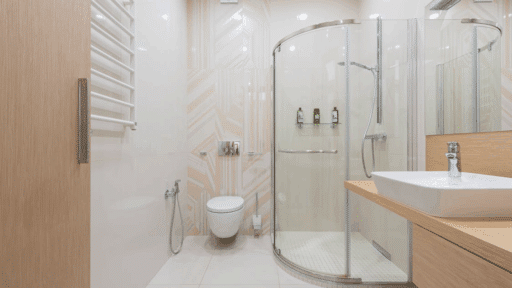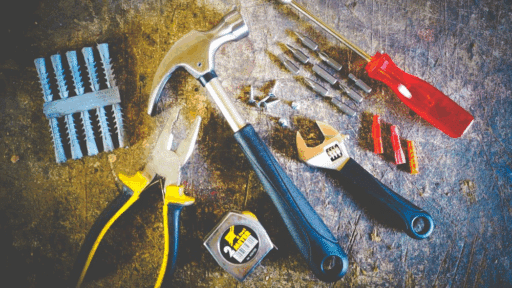You spent hours researching cabinet painting online, but every article gives different advice about paint types.
Some say use latex, others swear by oil-based, and a few mention mysterious “cabinet paint” that costs a fortune. You’re more confused than when you started.
The truth is the professional painters have access to specialized cabinet coatings that regular consumers rarely hear about, and knowing which best paint for kitchen cabinets to choose can save you from a costly do-over in two years.
What to Know Before Painting Your Cabinets
Before you grab that paintbrush and start going to town, there are some things you need to know.
I’ve seen too many DIY disasters that could’ve been avoided with a little prep knowledge. Your cabinets aren’t just any old surface. They get touched, slammed, splashed, and stressed daily.
Here’s what matters:
- Surface prep is everything: Those cabinets need to be squeaky clean and properly sanded
- Hardware removal: Yes, all of it. Don’t be that person who paints around hinges
- Prime time: Skip the primer, skip the professional look. It’s that simple
- Patience pays off: Rushing between coats will leave you with a sticky mess
The cabinet material also makes a difference: wood cabinets behave differently from laminate ones. And don’t even get me started on those slick factory finishes, they’re trickier than they look.
If your cabinets are falling apart or the doors don’t close properly, paint won’t fix that. Sometimes, you need to address the bones before worrying about the pretty stuff.
Oil vs Water-Based Paints
This is where things get spicy in the paint world. Among many other kitchen cabinet paint-related debates, such as spray vs. hand-painted, oil vs. water-based paints, have also kept people divided.
It’s like the great pineapple on pizza debate, but for your kitchen. Both sides have their die-hard fans, and honestly, both have their place.
Oil-based paints are the old-school champions:
- Durability: These babies can take a beating and keep on looking good
- Smooth finish: They level out beautifully, hiding brush strokes like magic
- Longer working time: No rush job here, you can take your sweet time
- The downside: Cleanup is messy, they smell strong, and they take forever to dry
Water-based paints are the new kids making waves:
- Quick drying: You’re not waiting around all day between coats
- Easy cleanup: Soap and water, that’s it
- Low odor: Your kitchen won’t smell like a paint factory
- The catch: They can be finicky about adhesion and might not be as tough
Most pros these days lean toward high-quality water-based options. The technology has advanced so far that it rivals oil-based durability without the associated headaches.
What Paint Do Professionals Use for Kitchen Cabinets?
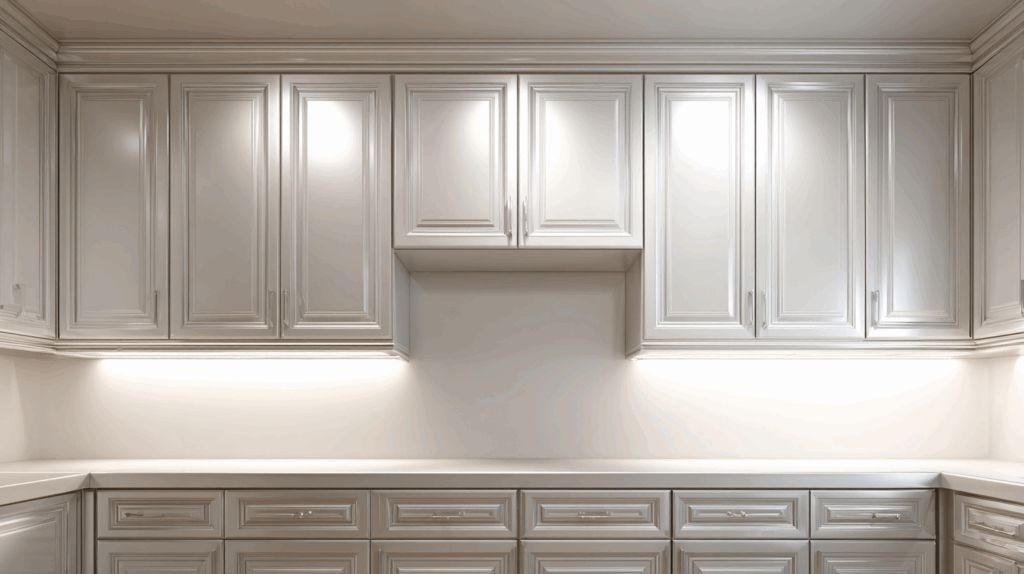
It’s time that I spill all the trade secrets. Professional painters have their go-to brands and formulations, and, surprise, they’re not all the same expensive stuff you might think.
What makes them special is that they’re also a part of the 2025 cabinet color trends
| Paint Brand | Type | Finish | Why Pros Love It |
|---|---|---|---|
| Sherwin-Williams ProClassic | Water-based alkyd | Semi-gloss/Satin | Perfect balance of durability and smooth application |
| Benjamin Moore Advance | Water-based alkyd | Semi-gloss/Satin | Flows like oil paint, cleans like latex |
| Behr Alkyd Semi-Gloss | Water-based alkyd | Semi-gloss | Budget-friendly option that still performs |
| Rust-Oleum Cabinet Transformations | Specialty formula | Satin | All-in-one system for complete makeovers |
What makes these paints special
They’re specifically designed to handle the daily abuse that kitchen cabinets face. Regular wall paint? It’ll chip faster than you can say “oops.”
The secret sauce is in the alkyd resins. These offer the best of both worlds: the durability of oil paint with the convenience of water-based cleanup.
Most pros swear by semi-gloss or satin finishes because they’re tough enough to scrub clean but not so shiny they show every fingerprint.
How to Paint Your Cabinet Professionally
Painting kitchen cabinets is not a difficult job, but it does require some method to the madness. Here’s how the experts get those factory-smooth results.
- Step 1: Remove everything. Take off doors, drawers, and all hardware. Label everything so you’re not playing puzzle games later.
- Step 2: Clean like your life depends on it. Degrease with TSP or a strong degreaser. Let everything dry completely and sand lightly with 220-grit sandpaper
- Step 3: Use a high-quality bonding primer. This step separates the pros from the amateurs.
- Step 4: Use a high-quality angled brush for detailed areas. Foam rollers give the smoothest finish on flat surfaces. Multiple thin coats beat one thick coat every time
- Step 5: Let each coat cure properly. Rushing this step ruins everything you’ve worked for.
The pro secret: Sand lightly between coats with fine sandpaper. It makes all the difference in getting that smooth, professional finish.
Conclusion
The truth about what paint professionals use and how they get those picture-perfect results is out. However, it’s not just about the paint itself, but how you use it.
Great cabinet painting is part science, part art, and a whole lot of patience. Go with Sherwin-Williams, Benjamin Moore, or another quality brand; the key is proper prep work and taking your time.
Your cabinets are the hardest-working surfaces in your kitchen. Give them the professional treatment they deserve, and they’ll reward you with years of beauty and durability.

